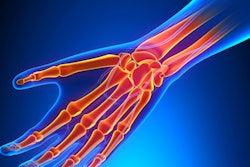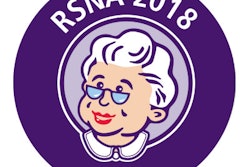
To help ensure that medical students will still find radiology appealing, attending radiologists in academic departments need to stay informed about artificial intelligence (AI) technology and the exciting potential it offers for the specialty, according to an editorial published online January 24 in Academic Radiology.
Radiology should be the medical specialty most primed to incorporate AI into its workflow, but, unfortunately, many attending radiologists aren't sure exactly how that will happen, wrote Dr. Allison Grayev of the University of Wisconsin School of Medicine and Public Health in Madison, WI.
"This disconnection can lead us to have a negative view of the future of technology-enhanced radiology, which can then discourage medical students from entering the field," she wrote. "Students rely on us to understand how radiology is incorporating new technology and what the future of the field will look like for them, but many of us are ill prepared to teach the younger generation about this, mostly because we ourselves are not sure."
To understand the future, it's a good idea first to look to the past to see how radiology has already incorporated AI, according to Grayev. Embracing PACS and electronic medical records has revolutionized the way radiologists perform their jobs and made them increasingly more efficient.
Grayev noted, though, that some of the concern over AI may be due to previous radiologist experiences with technology such as computer-aided detection (CAD).
"We are all familiar with the CAD program that consistently identifies the nipple as a lesion on mammography -- but this should enforce the [complementary] nature of the technology as it could never act as a replacement," she wrote. "It is equivalent [to] comparing the machine-generated electrocardiogram (EKG) report to the final cardiologist's impression."
Instead, AI could be used, for example, to prioritize a study list and assist in other radiologist tasks.
"A computer algorithm may struggle with differentiating mineralization from blood, but it might help highlight potentially emergent studies for review," she wrote. "A simple example is using current procedural terminology (CPT) codes embedded into studies on PACS to autopopulate report shells or use AI to perform the grunt work in studies by comparing multiple sclerosis lesions or generating automated volumetric measurements for multiple pulmonary nodules or metastatic lesions."
Many students, however, are getting their AI information from the press, "and splashy click bait trumpeting the demise of radiology is far more believable than the attending radiologist who can barely figure out how to send a graphics interchange format," Grayev wrote.
"If we are not willing to keep up to date with how AI is going to integrate into our specialty, we will be at consistent odds with the media and run the risk of decreasing our specialty's appeal to medical students," she wrote. "After all, in an era where radiologists are consistently being asked to do more for less, why not outsource some of the work to our computer overlords?"




















